Common Orthodontic Problems
A malocclusion, or “bad bite,” occurs when the teeth and/or jaw bones don't fit together properly. This may result in speech difficulties, inaccessibility for proper hygiene, premature tooth wear, injury to the teeth and jaw joints, and compromised function and esthetics. Orthodontic treatment may be necessary to straighten teeth and promote ideal health and function.
Anterior Crossbite
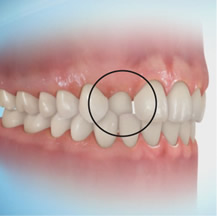
In this situation, one or more of the top front teeth fit inside the bottom teeth, which may lead to misalignment of the growing jaw, strain on the temporomandibular (jaw) joint (TMJ), or accelerated tooth wear.
Crowding
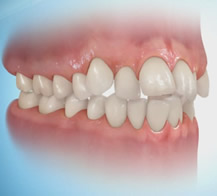
Crowding occurs when there is insufficient room in the jaws for all the teeth to erupt through the gums in an ideal position. This results in crooked teeth that are hard to clean, and may lead to tooth decay, periodontal ("gum") disease, and/or tooth loss.
Deep Bite (Excessive Overbite)
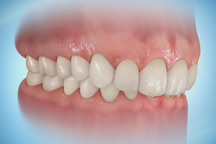
This refers to excessive vertical overlap between the upper front teeth and the lower front teeth. A deep bite may cause premature tooth wear, and, when the lower teeth bite into the roof of the mouth, may result in gum tissue inflammation or recession.
Midline Asymmetry
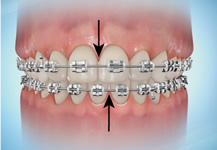
If the center of the upper and lower front teeth are not lined up, it may be a sign that the back teeth do not fit together properly.
Open bite
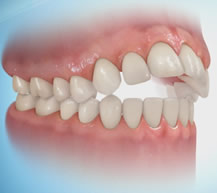
An anterior open bite occurs when there is no vertical overlap between the upper and lower front teeth (i.e., the front teeth do not touch) when the back teeth are in contact. This may interfere with speech and eating and is likely to cause excessive wear on the back teeth. Individuals with this type of bite often complain of an inability to completely bite through or tear their food, such as a sandwich. This may be a result of thumb sucking, tongue thrusting, or an underlying skeletal (jaw bone) problem.
Posterior Crossbite
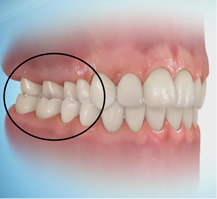
This is when one or more of the top back teeth fit inside the bottom teeth, which may lead to misalignment of the growing jaw, strain on the temporomandibular (jaw) joint (TMJ), or accelerated tooth wear.
Protrusion of Bottom Front Teeth (Negative Overjet)
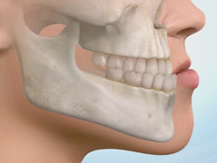
In this instance, the lower front teeth extend out in front of the upper front teeth. This is due to either the lower front teeth (or lower jaw) being too far forward or the upper front teeth (or upper jaw) being too far back, or a combination of the two. This relationship can lead to abnormal tooth wear and/or jaw joint (TMJ) dysfunction.
Protrusion of Top Front Teeth (Excessive Overjet)
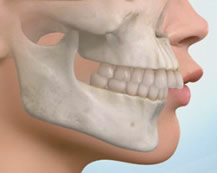
When there is excessive horizontal overlap between the top and bottom front teeth, it's known as protrusion. Protruded front teeth develop due either to the top front teeth (or top jaw) being too far forward or the bottom front teeth (or bottom jaw) being too far back, or a combination of the two. In active individuals, particularly children and adolescents, this tooth/jaw relationship can result in tooth fracture or trauma if there is a blow to the front of the mouth. This relationship can also lead to abnormal tooth wear and/or jaw joint (TMJ) dysfunction.
Spacing

There may be space between adjacent teeth, which can be caused by missing or undersized teeth, oversized jaws, or a combination of the two. Spacing of the teeth can lead to food impaction and speech problems.

No comments:
Post a Comment